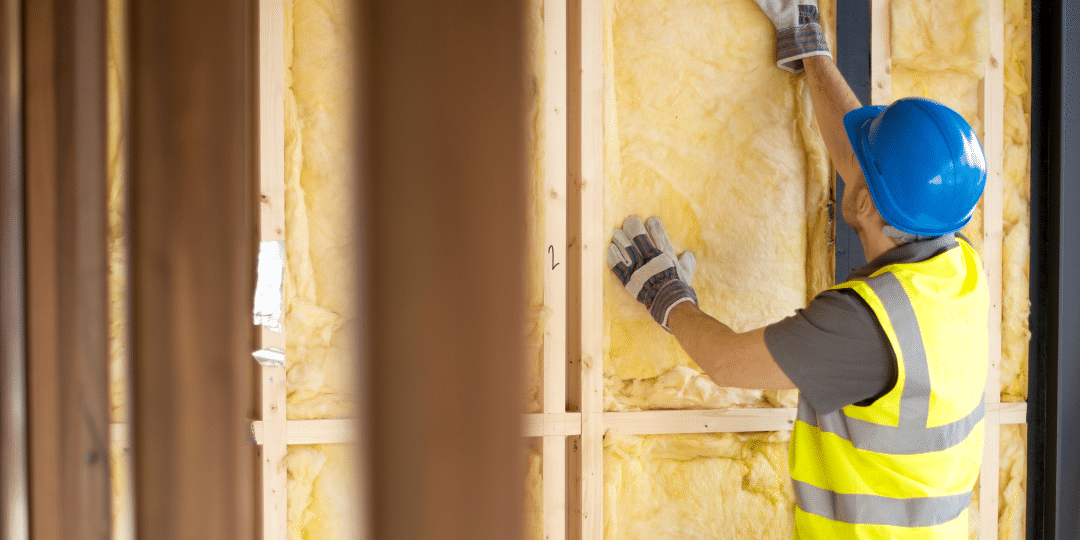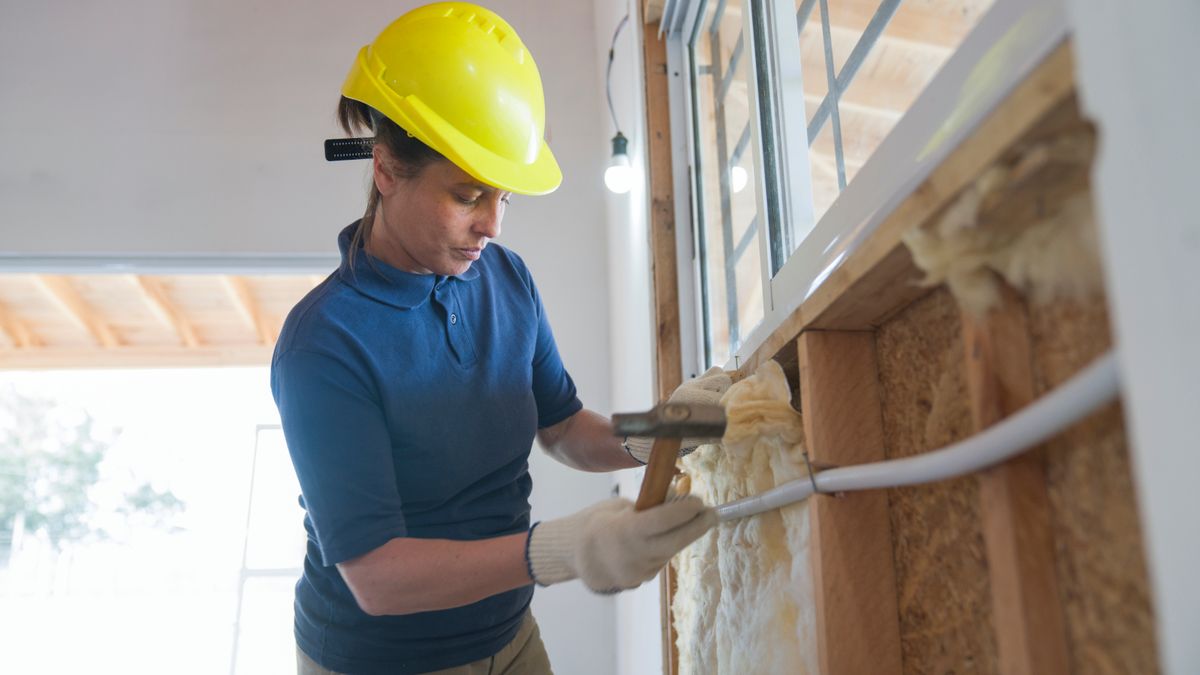Commercial facilities cut the largest slice from their energy bills by tightening the building envelope. Two moves deliver the fastest payback: (1) add continuous high‑R insulation above the roof deck or behind cladding, and (2) eliminate thermal bridges with spray polyurethane foam (SPF) or rigid boards at structural penetrations. Together, these measures can trim heating and cooling loads 15 – 40 % in most U.S. climate zones and pay for themselves in three to seven years.
This article unpacks the main insulation options, their technical performance, and the decision factors that most affect lifetime operational cost. Tables group the hard numbers in one place; skim them first, then read deeper where you need more context.

Key Insulation Methods and Cost Impact
| Insulation Type | R‑Value / inch | Installed Cost* ($ / ft²) | Typical Payback (yrs) | Fire Rating (ASTM E84) | Moisture Resistance | Best Uses |
| Closed‑Cell Spray Polyurethane Foam (ccSPF) | 6.0 – 6.8 | 3.50 – 5.00 | 3 – 5 | Class A with intumescent coating | Impermeable | Roof decks, underside of metal roofs |
| Polyisocyanurate (Polyiso) Board | 5.6 – 6.5 | 2.25 – 3.50 | 4 – 6 | Class A | Low, needs cover board | Low‑slope commercial roofs |
| Extruded Polystyrene (XPS) Board | 4.5 – 5.0 | 1.80 – 2.80 | 4 – 7 | Class A | Good | Below‑grade walls, inverted roofs |
| Mineral Wool Board | 4.0 – 4.3 | 2.50 – 3.80 | 6 – 8 | Non‑combustible | Hydrophobic | Facades requiring non‑combustibility |
| Fiberglass Batts | 3.1 – 3.8 | 1.20 – 1.80 | 7 – 10 | Class A | Moderate | Metal‑framed interior walls |
| Vacuum‑Insulated Panel (VIP) | 25 – 30 | 8.00 – 12.00 | 8 – 12 | Class A | Sealed, sensitive | Retrofits with space limits |
*Above‑deck roof applications; mid‑2025 national averages.
Market snapshot. The global commercial insulation market reached USD 2.23 billion in 2024 and is projected to grow 4.2 % annually through 2033, driven by stricter codes and energy‑price volatility.
Bonus Tip
Use a blended system—mineral wool across fire egress walls and high‑R polyiso elsewhere—to hit fire and energy codes at the lowest installed cost.
Technical Performance Metrics
| Material | Thermal Conductivity λ (W/m·K) | Density (kg/m³) | Compressive Strength (kPa) | Service Temp (°C) | Vapor Permeability (perm) |
| ccSPF | 0.024 – 0.028 | 32 – 40 | 170 – 240 | ‑40 to 90 | < 1 (vapor barrier) |
| Polyiso | 0.024 – 0.027 | 32 – 48 | 138 – 172 | ‑100 to 120 | 1 – 10 |
| XPS | 0.029 – 0.035 | 28 – 40 | 150 – 250 | ‑50 to 75 | < 1 |
| Mineral Wool | 0.037 – 0.040 | 40 – 200 | 30 – 80 | up to 650 | > 30 |
| Fiberglass | 0.040 – 0.045 | 9 – 32 | 20 – 35 | ‑50 to 250 | 30 – 50 |
| VIP (core) | 0.004 – 0.006 | 140 – 250 | 100 – 300 | ‑50 to 80 | 0 (sealed) |
Code and Standard Drivers
Recent ASHRAE 90.1‑2022 addenda tighten minimum R‑values for walls and roofs in warm climate zones, pushing many owners toward higher‑performance boards or SPF overlays.
Simultaneously, U.S. commercial buildings spent USD 141 billion on energy in 2018, and electricity demand is forecast to hit record highs by 2025, underscoring insulation’s ROI.
Selecting the Right System
Climate Zone & Building Use
- Hot‑humid zones: prioritize vapor‑impermeable systems (ccSPF or XPS) to block inward moisture drive.
- Cold zones: layer continuous rigid boards outside the air barrier to keep dew point out of stud cavities.
- High‑humidity interiors (pools, food processing): choose mineral wool or SPF with vapor retarder coating.
Assembly Constraints
- Roof replacement: polyiso over existing membranes offers high R per inch and least disruption.
- Heritage facades: VIP panels slip behind masonry without altering exterior profiles.
Operational Profile
Buildings running 24/7 HVAC (data centers, hospitals) see faster payback—sometimes < 3 years—because load reductions occur around the clock.
Budget & Incentives
Utility rebates often pay USD 0.10– 0.25 per added R‑square‑foot for envelope upgrades. Confirm local programs before bidding.
Bonus Tip
When capital is tight, insulate the roof edge and parapet first—studies show they leak 10 % of roof heat yet cover < 5 % of area.

Installation Best Practices
- Continuous Air Barrier Integration
- Spray foam or fully adhered membranes stop uncontrolled air movement.
- Thermal Bridge Blocking
- Use rigid board at perimeter steel, slab edges, and canopy penetrations.
- Layered Taper Strategy
- On low‑slope roofs, taper polyiso to maintain drainage and meet R‑value without adding crickets.
- Quality Assurance
- Conduct core cuts or infrared scans 24 h after install to verify adhesion and thickness.
Bonus Tip
Schedule roofing insulation during shoulder‑season months to avoid cure issues and reduce crane time lost to weather delays.
Things to Consider Before Making a Decision
| Factor | Why It Matters | Action Step |
| Local code amendments | Cities often add R‑value above ASHRAE minimums | Request written code interpretation early |
| Roof load capacity | Extra insulation adds dead weight | Order structural review for decks < 20 psf reserve |
| Fire classification | High‑rise and assembly occupancies mandate non‑combustible layers | Specify mineral wool cover boards or facer‑free polyiso |
| Future rooftop solar | Raised stanchions penetrate the roof | Coordinate flashing details and maintain continuous insulation |
| Life‑cycle costing | Lowest bid rarely equals lowest 25‑year cost | Model energy + maintenance cash flows before award |
Common Questions
- How much R‑value is “enough” for a commercial roof?
Build at least 20 % above the code minimum; every extra R‑5 typically shortens payback by 0.5–1 year. - Does adding insulation trap moisture?
Not if you place the vapor retarder on the warm side and allow controlled drying paths. Use hygro‑thermal modeling for complex walls. - Can I reuse existing insulation during reroofing?
Yes—if boards show < 10 % moisture by weight and retain > 80 % compressive strength. Test samples before reuse. - What is the ROI on air barrier upgrades?
Projects that cut air leakage to 0.25 cfm/ft² at 1.57 psf save 3 – 7 kBtu/ft² annually, worth roughly USD 0.25 – 0.35/ft² per year at 2025 energy prices.
Commercial Insulation Approaches to Minimize Operational Costs FAQ
Q1. Do I need both insulation and an air barrier?
Yes. Insulation resists heat flow; an air barrier controls convective losses and moisture migration. Pairing both maximizes savings.
Q2. Which material offers the fastest payback?
Closed‑cell SPF over metal roofs often pays back in under four years due to combined insulation and air‑sealing benefits.
Q3. How long does polyiso retain its R‑value?
Modern laminated‑facer polyiso loses about 5 % R in the first five years, then stabilizes for decades.
Q4. Is mineral wool worth the extra cost?
For buildings requiring non‑combustible walls or high acoustic ratings, mineral wool’s fire and sound benefits justify its 20 – 30 % premium.
Q5. Can insulation upgrades qualify for tax deductions?
U.S. IRS §179D (updated 2023) offers up to USD 5.00/ft² for envelope improvements meeting specific energy thresholds.
Make the Right Decision
Insulation delivers one of the few building upgrades that immediately lowers operating costs while boosting occupant comfort and asset value. Start with a whole‑building energy model, choose materials suited to your climate and fire requirements, and insist on verified installation. The result is predictable energy savings, reduced greenhouse‑gas emissions, and lower long‑term maintenance.
Author and Reviewer:
Author: Bob Gasca attended his first spray foam training in 2007 and has continued to pursue yearly training to stay current with the latest technology and practices. He is a certified Spray Foam Master Installer through the SPFA and a member of the SPFA. Additionally, Bob serves as a Spray Foam Worldwide Ambassador, sharing information with spray foam professionals globally. Recently, he returned from a building science training, where he expanded his knowledge on how weather conditions affect home performance, helping him better diagnose and improve home health for families. Bob specializes in finding solutions to complex moisture and air infiltration issues.
Reviewer: Noah Gonzalez reviewed this article and drew on 9 years of experience to offer suggestions that make the guidance more directly useful for insulation contractors.

